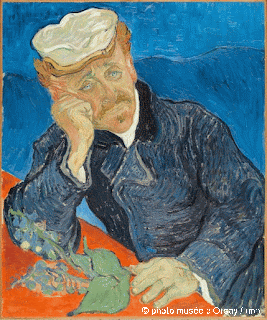Tuesday, January 07, 2014 -  Judge Arthur Tompkins,Paris
Judge Arthur Tompkins,Paris
 No comments
No comments
 Judge Arthur Tompkins,Paris
Judge Arthur Tompkins,Paris
 No comments
No comments
Postcard from Paris: Judge Arthur Tompkins writes on 'two extremes of Parisian retail history' and creating art
 |
| Painting of Shakespeare & Company, Paris From the collection of Judge Arthur Tompkins |
By Judge Arthur Tompkins
Today [November 2, 2013] I experienced two extremes of Parisian retail history.
First up, Fauchon. Since 1886, from two neighbouring bright pink stores opposite the north-western corner of the Madeleine, Fauchon has catered for the luxury end of the Paris gourmet, gastronome and epicurean market, with a bewildering and hugely tempting array of comestibles – caviar, coffees and teas, and a mouth-watering array of chocolates and biscuits, among very much else – and also served the occasional antipodean interloper. I ventured in today after a selection of gifts for the family back home, as well as a coffee – having opened the first 'salon de thé' in Paris in 1898, Fauchon’s teas are famous, but coffee is more my legally addictive stimulant of choice.
Having (considerably) lightened my wallet and consumed a fine, although not necessarily fantastic coffee, I bundled my carefully gift-wrapped purchases into the front basket of a Velib bike, and bumped my way across Paris to Shakespeare & Co.
For all sorts of reasons this venerable bookstore across the river is at the other end of the retail spectrum from Fauchon. Ramshackle, crowded, dishevelled, the haunt of aspiring and penurious writers and lovers of literature, and on very many people’s guidebook list of “things-to-see-and-photograph-on-your-iPhone-when-in-Paris”, it sits in a small square with fine views of the front of Notre Dame. Attentive readers may remember that in 2011 I visited the store, with an interesting pictorial result. Here’s my email from that visit:
Dear All,
I spent yesterday, for a couple of hours in the early evening, being photographed by literally dozens of people, and painted by a young woman from Tulsa, Oklahoma.
As you do.
As is my wont when in Paris, I visited the Shakespeare & Co bookshop, after a nostalgic visit to the Bibliotheque Mazarin. After buying a book, the sun was shining, Notre-Dame was gleaming in the afternoon light, the trees were shady, and all was good in the world. So I took advantage of Shakespeare & Co's hospitality, and sat myself down in a chair by the front door to read. It turned out that my position was such that every second person who happened along, and who took a picture of the famous storefront, necessarily included me in the picture. After a while I began to assume a proprietary air, hoping that when they showed their Paris pics to friends and family back home, then would indulge in a little poetic license and describe me as the owner of the legendary bookshop. I lost count after about 35 or so people had taken my picture...
Then a young woman set up an easel right in front of the store, and began to paint. I stayed in situ long enough to ensure that she painted me in, and had a couple of chats with her as she did so. She hailed from Tulsa Oklahoma, and was spending the last three weeks of (I think) a summer college vacation in Paris, and wanted to be a painter. She has promised to email me a photograph of the finished picture.
In fact, I ended up buying the picture from her, and a copy of it is shown above. The original hangs in my library at home – from which it has not, to the best of my knowledge, been stolen by a passing art crime enthusiast. (Although if that happened, and the felon in question was prepared to swap it for a purloined Vermeer, I saw a nice one in the Louvre yesterday …).
I pursued a similar pastime - sitting and reading for an hour or so yesterday out the front of the store. Sadly no itinerant artist happened along to paint my picture. But I am happy to report that I will again appear in a large number of Paris holiday pictures taken by lots of people of a wide variety of digital devices, including several iPads – which do look faintly ridiculous when held up and used as a camera.
George Whitman, the eccentric founder of the store, died at age 98, in his apartment above the store two years ago, as it happens three months after I visited the store in September 2011. Although I don’t think the two events are connected. Here’s his New York Times obituary: http://www.nytimes.com/2011/12/15/books/george-whitman-paris-bookseller-and-cultural-beacon-is-dead-at-98.html?pagewanted=all&_r=0
Off to Lyon, and Interpol, tomorrow…





















